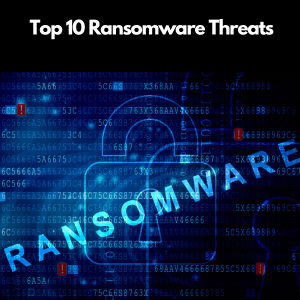Ransomware is no longer confined to encrypting data for a quick payday. In 2024, attackers are leveraging a mix of traditional methods and emerging tools to exploit vulnerabilities with devastating efficiency.
- Remote Access Trojans (RATs)
Remote Access Trojans (RATs) are malware that allows attackers to remotely control infected systems, facilitating data theft, surveillance, and the deployment of additional malware, including ransomware.
RATs are typically delivered through phishing emails, malicious attachments, or compromised websites. Once installed, they give attackers administrative control over the infected system, enabling them to manipulate files, monitor user activity, and install other malicious software. The Agent Tesla RAT has been used to steal sensitive information and deploy ransomware in targeted attacks against various industries (CrowdStrike).
- Crypto Ransomware
Crypto ransomware encrypts files on a victim’s system, rendering them inaccessible without a decryption key. Attackers demand payment, usually in cryptocurrency, threatening to delete the key if demands are not met. This type is often devastating, particularly for organizations dependent on data accessibility.
It is usually delivered through phishing emails, malicious attachments, or compromised websites. After infiltration, it scans for specific file types (e.g., documents, images) and encrypts them using advanced algorithms. Victims receive a ransom note with payment instructions and threats of permanent data loss. In July 2024, the Dark Angels ransomware group executed a significant attack on a Fortune 50 company, resulting in a record-breaking ransom payment of $75 million (Chainalysis).
- Locker Ransomware
Locker ransomware disables access to devices or applications without encrypting files. Victims are locked out of their systems, often greeted by a ransom note on a frozen screen. While the files remain intact, operational disruption can be severe. The ransomware disables operating systems or locks access to applications, showing a ransom message on the screen.
In May 2024, an international law enforcement operation led to the unmasking and sanctioning of Dmitry Khoroshev, a Russian national identified as a leader of the LockBit ransomware group (The Guardian). Khoroshev, also known as "LockBitSupp," was the mastermind behind developing and administering LockBit's ransomware-as-a-service operations, which facilitated over 7,000 attacks globally between June 2022 and February 2024, extorting more than $1 billion from victims worldwide.
- Leakware
Leakware, also known as double extortion ransomware, adds another layer of threat by exfiltrating sensitive data before encrypting it. Attackers threaten to publish stolen information if the ransom isn’t paid, adding reputational and compliance risks to the financial burden.
After accessing a system, attackers extract sensitive data, then encrypt files on local systems. Victims face a dual threat: pay to recover data or pay to prevent its exposure online. In mid-July 2024, the Lynx ransomware group emerged, swiftly targeting over 25 small and medium-sized businesses (SMBs) across North America and Europe (Blackberry). The group employs a double extortion strategy: after illicitly accessing a system, they exfiltrate sensitive data before encrypting it, then threaten to publish the stolen information on their leak sites to pressure victims into paying the ransom.
- DDoS Ransomware
DDoS ransomware combines Distributed Denial of Service (DDoS) attacks with extortion tactics, disrupting operations by overwhelming servers with massive illegitimate traffic. Unlike traditional ransomware, which encrypts data, this method coerces victims by threatening to sustain or escalate the attack until payment is made.
Attackers typically deploy botnets—networks of compromised devices—to flood target servers with overwhelming traffic, exhausting bandwidth and rendering systems unresponsive. This can result in significant downtime, operational chaos, and financial losses. The ransom note usually follows the onset of the attack, warning victims of prolonged disruptions or intensified assaults if the demanded payment is not met. In some cases, attackers may combine DDoS with data exfiltration, amplifying the pressure by threatening to leak sensitive information.
- Ransomware-as-a-Service (RaaS)
As a new, dangerous vector, RaaS democratizes cyberattacks, enabling even low-skilled hackers to launch sophisticated campaigns. Ransomware developers rent out their tools, taking a cut of the profits. This model has scaled ransomware’s impact exponentially.
Ransomware kits are sold or rented on dark web marketplaces. Then, affiliates launch attacks, often choosing targets from industries vulnerable to downtime (e.g., healthcare, logistics). A Prominent RaaS groups like LockBit, BlackCat, Hive, and Dharma provide malicious software and support services, including negotiation management and data leak platforms. As a domino effect, this comprehensive infrastructure complicates efforts to trace and dismantle their operations, enabling a decentralized network of affiliates to conduct widespread attacks.
- Droppers
Droppers are malicious programs that install additional malware, such as ransomware, onto a system. They act as carriers, delivering the primary malicious payload without detection. Often disguised as legitimate software or files, droppers are tricking users into executing them. Once executed, they install the primary malware payload, including ransomware or other malicious software.
The Emotet malware, known for its modular structure, has been used as a dropper to deliver ransomware like Ryuk and Conti, leading to significant financial losses for organizations (CrowdStrike).
- MBR Ransomware
MBR ransomware takes attacks to a deeper level by infecting the Master Boot Record (MBR) of a computer’s hard drive. The MBR is critical for starting an operating system. By corrupting or replacing it, attackers render the entire system inaccessible. Victims encounter a ransom note instead of their usual boot screen, demanding payment to restore functionality. Unlike traditional ransomware encrypts individual files, MBR ransomware blocks access to the entire operating system, effectively holding the device hostage.
The malware overwrites the MBR with malicious code. Upon reboot, the system fails to load the operating system and displays the attacker’s ransom message. Victims are instructed to pay, often in cryptocurrency, to regain access to their machines.
- Scareware
Scareware exploits users' fear rather than technical vulnerabilities. It displays fake virus warnings or ransomware infection messages, tricking victims into paying for fraudulent “fixes.” Pop-up messages or browser redirects claim the system is infected. Victims are directed to pay for fake antivirus software or ransomware removal tools.
Throughout 2024, a cybercriminal gang called "Midnight" has been targeting previous ransomware victims with fake extortion threats(KnowBe4). They claim to have stolen large amounts of data and demand a ransom to prevent its releass.
- Wiper Malware
Wiper malware is designed to delete files on infected systems, prioritizing disruption over financial gain. In contrast to ransomware, which typically seeks monetary payments, wiper malware's sole objective is to erase data and cause operational chaos.
In October 2024, cybercriminals impersonated ESET, a cybersecurity firm, to distribute wiper malware through phishing emails. The emails urged recipients to download a fake "ESET Unleashed" tool from a compromised Israeli partner's domain. The malware targeted cybersecurity personnel in Israeli organizations, likely aiming to disrupt digital defenses. ESET confirmed the incident was contained quickly, and their systems were unaffected (The Record).
.png?width=1816&height=566&name=brandmark-design%20(83).png)



